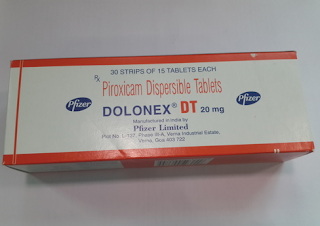Bone density test
Bone density test
Overview
A bone density test determines if you have osteoporosis — a disorder characterized by bones that are more fragile and more likely to break.In the past, osteoporosis would be suspected only after you broke a bone. By that time, however, your bones could be quite weak. A bone density test enhances the accuracy of calculating your risk of breaking bones.
A bone density test uses X-rays to measure how many grams of calcium and other bone minerals are packed into a segment of bone. The bones that are most commonly tested are in the spine, hip and sometimes the forearm.
Why it's done
-
Bone density
- Identify decreases in bone density before you break a bone
- Determine your risk of broken bones (fractures)
- Confirm a diagnosis of osteoporosis
- Monitor osteoporosis treatment
Bone density tests differ from bone scans. Bone scans require an injection beforehand and are usually used to detect fractures, cancer, infections and other abnormalities in the bone.
Although osteoporosis is more common in older women, men also can develop the condition. Regardless of your sex or age, your doctor may recommend a bone density test if you've:
- Lost height. People who have lost at least 1.6 inches (4 centimeters) in height may have compression fractures in their spines, for which osteoporosis is one of the main causes.
- Fractured a bone. Fragility fractures occur when a bone becomes so fragile that it breaks much more easily than expected. Fragility fractures can sometimes be caused by a strong cough or sneeze.
- Taken certain drugs. Long-term use of steroid medications, such as prednisone, interferes with the bone-rebuilding process — which can lead to osteoporosis.
- Received a transplant. People who have received an organ or bone marrow transplant are at higher risk of osteoporosis, partly because anti-rejection drugs also interfere with the bone-rebuilding process.
- Had a drop in hormone levels. In addition to the natural drop in hormones that occurs after menopause, women's estrogen may also drop during certain cancer treatments. Some treatments for prostate cancer reduce testosterone levels in men. Lowered sex hormone levels weaken bone.
Risks
Limitations of bone density testing include:- Differences in testing methods. Devices that measure density of the spinal and hip bones are more accurate but cost more than do devices that measure density of the peripheral bones of the forearm, finger or heel.
- Limited insurance coverage. Not all health insurance plans pay for bone density tests, so ask your insurance provider beforehand if you're covered.
- Lack of information about the cause. A bone density test can confirm that you have low bone density, but it can't tell you why. To answer that question, you need a more complete medical evaluation.
How you prepare
Bone density tests are easy, fast and painless. Virtually no preparation is needed. In fact, some simple versions of bone density tests can be done at your local pharmacy or drugstore.If you're having the test done at a medical center or hospital, be sure to tell your doctor beforehand if you've recently had a barium exam or had contrast material injected for a CT scan or nuclear medicine test. Contrast materials might interfere with your bone density test.
Food and medications
Avoid taking calcium supplements for at least 24 hours before your bone density test.Clothing and personal items
Wear loose, comfortable clothing and avoid wearing clothes with zippers, belts or buttons. Remove all metal objects from your pockets, such as keys, money clips or change.What you can expect
-
Locations for bone density testing
- Lower spine bones (lumbar vertebrae)
- The narrow neck of your thighbone (femur), next to your hip joint
- Bones in your forearm
A small, portable machine can measure bone density in the bones at the far ends of your skeleton, such as those in your finger, wrist or heel. The instruments used for these tests are called peripheral devices, and are often found in pharmacies. Tests of peripheral bone density are less expensive than are tests done on central devices.
Because bone density can vary from one location in your body to another, a measurement taken at your heel usually isn't as accurate a predictor of fracture risk as a measurement taken at your spine or hip. Consequently, if your test on a peripheral device is positive, your doctor might recommend a follow-up scan at your spine or hip to confirm your diagnosis.
Results
Your bone density test results are reported in two numbers: T-score and Z-score.T-score
Your T-score is your bone density compared with what is normally expected in a healthy young adult of your sex. Your T-score is the number of units — called standard deviations — that your bone density is above or below the average.| T-score | What your score means |
|---|---|
| -1 and above | Your bone density is considered normal. |
| Between -1 and -2.5 | Your score is a sign of osteopenia, a condition in which bone density is below normal and may lead to osteoporosis. |
| -2.5 and below | Your bone density indicates you likely have osteoporosis. |




Comments
Post a Comment